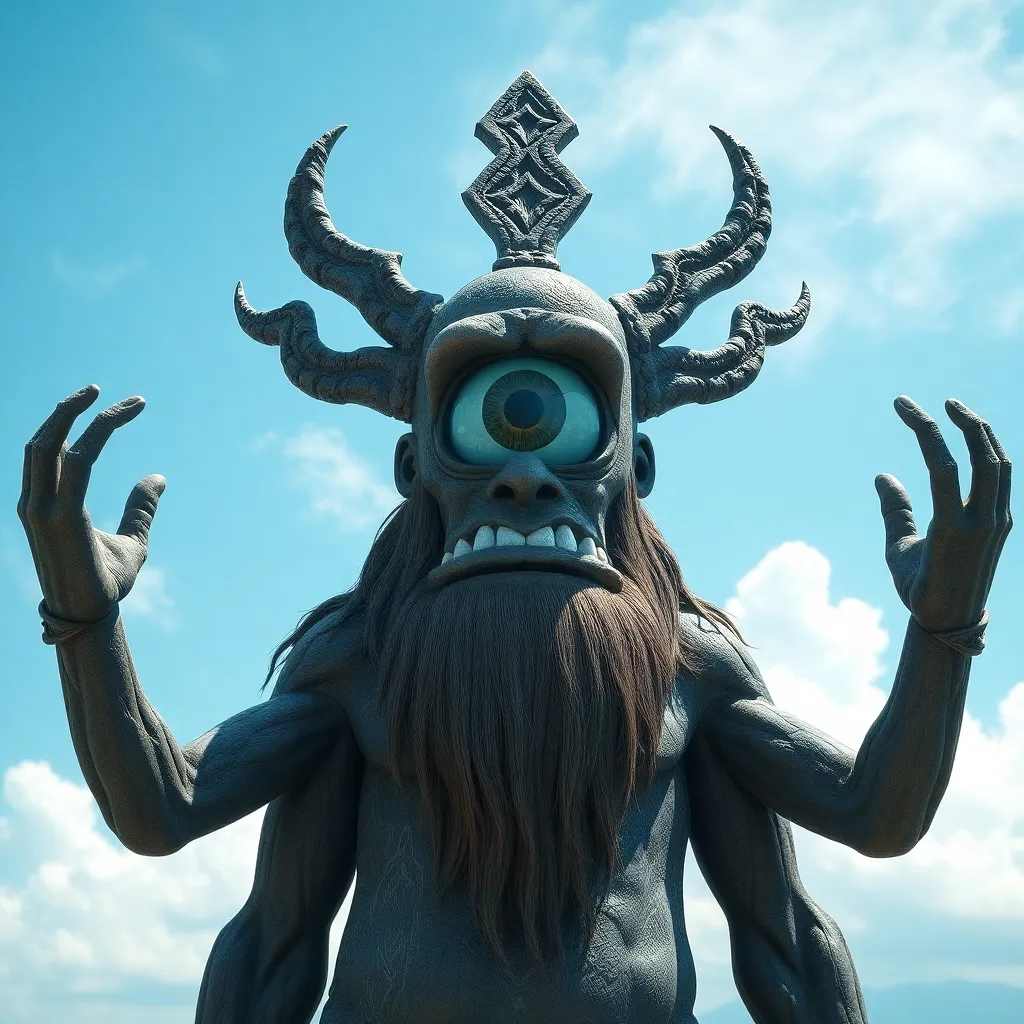The Cyclops in Polynesian Mythology: Examining the One-Eyed Giant in Polynesian Myths
I. Introduction
Polynesian mythology is a rich tapestry of stories and beliefs that reflect the values, history, and culture of the peoples of the Pacific Islands. Among the numerous figures that populate these mythological narratives, the Cyclops—a one-eyed giant—stands out as a particularly fascinating character. This article aims to explore the origins, characteristics, and significance of the Cyclops in Polynesian mythology, examining how this figure has evolved over time and its impact on contemporary culture.
II. Origins of the Cyclops Myth in Polynesia
A. Historical context of Polynesian storytelling
Polynesian storytelling has deep roots in the oral traditions of the islands, where myths and legends were passed down through generations. These stories often served to explain natural phenomena, convey moral lessons, and preserve the history of the people. The Cyclops myth likely emerged within this context, reflecting the unique cultural landscape of the Pacific Islands.
B. Comparative analysis with Cyclops from other mythologies (e.g., Greek)
The most famous Cyclops in Western mythology is found in Greek tales, particularly in Homer’s “Odyssey,” where Polyphemus, a one-eyed giant, encounters Odysseus. While the Greek Cyclops is often portrayed as a savage beast, the Polynesian variant might embody different attributes, reflecting the values and fears of Polynesian societies. This comparative analysis highlights how different cultures interpret similar archetypes based on their unique experiences.
C. The significance of the Cyclops in early Polynesian culture
The Cyclops in Polynesian mythology often symbolizes strength and isolation. In early Polynesian societies, where community and cooperation were vital for survival, the one-eyed giant could represent the dangers of individualism or the potential for destructive power when disconnected from the community.
III. Characteristics of the Cyclops in Polynesian Tales
A. Physical descriptions and attributes
In Polynesian myths, Cyclopes are typically depicted as large, muscular beings with a single eye in the center of their forehead. This distinctive feature sets them apart from other giants in mythology. They are often described as having an imposing presence, with skin that is either earth-toned or adorned with natural markings, reflecting their connection to the land.
B. Common traits and behaviors
- Isolation: The Cyclops is often portrayed as living in remote locations, such as caves or isolated islands, highlighting themes of loneliness.
- Strength: They are typically depicted as immensely strong, capable of feats that ordinary humans cannot accomplish.
- Intelligence: Unlike the brutish Cyclopes of Greek mythology, Polynesian Cyclopes may also possess cunning and intelligence, using their wits as much as their strength.
C. Symbolism of the one-eyed giant in Polynesian beliefs
The one-eyed nature of the Cyclops can symbolize various concepts in Polynesian culture, such as:
- Unity: The single eye may represent a singular vision or focus on a particular goal or purpose.
- Isolation vs. Community: The Cyclops serves as a reminder of the importance of community, contrasting the dangers of isolation.
- Nature’s Power: As a creature tied to the land, the Cyclops embodies the strength and unpredictability of nature.
IV. Prominent Cyclops Stories in Polynesian Mythology
A. Summary of key myths featuring the Cyclops
Several stories feature Cyclopes in Polynesian mythology, including:
- The Cyclops and the Hero: A tale where a hero must confront a Cyclops to retrieve a stolen treasure, symbolizing the struggle between good and evil.
- The Cyclops in the Landscape: Stories that explain geological formations as the result of a Cyclops’s actions, illustrating the connection between myth and the natural world.
B. Analysis of variations across different Polynesian islands
While the Cyclops is a common figure, different islands have their own variations of the myth. For example:
- Hawaiian Myths: Cyclopes may be depicted as protectors of sacred sites.
- Tahitian Tales: Cyclopes can be shown as benevolent figures who assist heroes on their quests.
C. The role of the Cyclops in these narratives
In many stories, the Cyclops serves as an antagonist, challenging heroes and forcing them to confront their fears. This role is crucial in the hero’s journey, as it tests their strength, intelligence, and resolve.
V. The Cyclops as a Cultural Symbol
A. Representation of isolation and individuality
The Cyclops embodies the tension between individuality and community. Their solitary nature serves as a cautionary tale about the perils of isolation, emphasizing the need for social bonds.
B. The Cyclops as a metaphor for human traits or societal issues
In many Polynesian stories, the Cyclops can represent human flaws such as greed, arrogance, or the consequences of neglecting communal responsibilities. By confronting the Cyclops, heroes often confront these societal issues.
C. Connection to the environment and nature in Polynesian culture
The Cyclops is often portrayed in ways that reflect the natural environment, serving as a bridge between human experiences and the natural world. Their myths can highlight the importance of respecting nature and understanding its power.
VI. The Influence of the Cyclops Myth on Modern Polynesian Culture
A. Adaptations in contemporary art and literature
Modern interpretations of Cyclopes can be seen in various forms of art, literature, and performance. Artists draw on the myth to explore themes of identity, belonging, and environmental stewardship.
B. The Cyclops in popular culture and media
While the Cyclops is often overshadowed by other mythological figures in contemporary media, it occasionally appears in films, books, and television shows, bringing a modern twist to this ancient character.
C. Preservation of Cyclops stories in modern Polynesian communities
Efforts are underway to preserve and revitalize these myths within Polynesian communities, ensuring that the stories of the Cyclops continue to be told and appreciated by future generations.
VII. Comparative Analysis: The Cyclops in Global Mythology
A. Similarities and differences with Cyclops in Greek mythology
While both Greek and Polynesian Cyclopes share the characteristic of being one-eyed giants, their narratives diverge significantly. The Greek Cyclops is often a symbol of savagery, whereas the Polynesian Cyclops may embody more nuanced traits, including intelligence and a connection to nature.
B. Influence of trade and cultural exchange on myth development
The movement of peoples across the Pacific has facilitated the exchange of ideas and stories, influencing how myths like that of the Cyclops have evolved and adapted over time.
C. Exploration of other cultures’ interpretations of one-eyed giants
Many cultures have their own versions of one-eyed giants, each reflecting unique societal values and fears. Comparing these can provide deeper insights into how different civilizations view strength, individuality, and community.
VIII. Conclusion
A. Recap of key points about the Cyclops in Polynesian mythology
The Cyclops is a multifaceted figure in Polynesian mythology, representing themes of isolation, strength, and the relationship between humanity and nature. Its stories are integral to understanding Polynesian cultural values.
B. The enduring legacy of Cyclops myths in contemporary society
As societies evolve, the myths surrounding the Cyclops continue to resonate, offering timeless lessons about the human experience.
C. Final thoughts on the significance of these myths in understanding Polynesian culture
Through the lens of the Cyclops, we can gain valuable insights into the complexities of Polynesian culture, illustrating the interplay between myth, identity, and the natural world.




